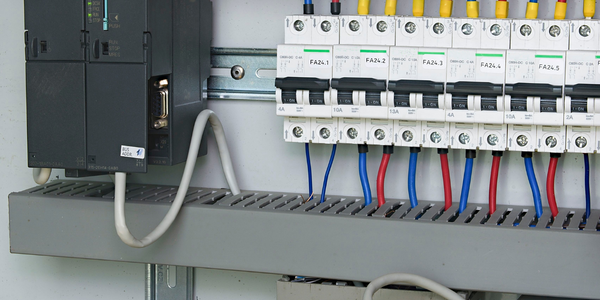Customer Company Size
Large Corporate
Region
- America
- Asia
- Europe
Country
- United States
Product
- nGeniusONE Service Assurance platform
- Arbor Edge Defense
- nGeniusPULSE
- InfiniStreamNG software
- vSTREAM virtual appliances
Tech Stack
- Microsoft Azure
- Amazon Web Services
- Equinix Co-location
- SD-WAN
- Network Function Virtualization (NFV)
Implementation Scale
- Enterprise-wide Deployment
Impact Metrics
- Cost Savings
- Productivity Improvements
- Digital Expertise
Technology Category
- Infrastructure as a Service (IaaS) - Cloud Computing
- Infrastructure as a Service (IaaS) - Hybrid Cloud
- Infrastructure as a Service (IaaS) - Public Cloud
Applicable Industries
- Electronics
- Software
Applicable Functions
- Discrete Manufacturing
- Sales & Marketing
- Business Operation
Services
- Cloud Planning, Design & Implementation Services
- Cybersecurity Services
- Data Science Services
About The Customer
This US-based manufacturer of high-tech software has several development centers and dozens of sales offices globally. Their customers, some of the world’s largest, most demanding enterprises, government agencies and service provider organizations, depend on their 24 x 7 x 365 support services for maintaining production deployments of the manufacturer’s equipment. Availability for communicating among and between all these locations is critical, as new product development, sustaining engineering, training, sales & marketing, and customer service & support services are conducted out of many of these offices, and each function depends on immediate collaboration at any given time. Slowdowns or unavailability in voice, video or business data services are simply not an option, which is why they have been a long-time NETSCOUT® customer.
The Challenge
The manufacturer had more than a dozen development centers with varying levels of on-premise data center equipment. The company had deployed a common architecture at the time – hosting most of their core services, like e-mail, unified communications (UC), file sharing, authentication (i.e., Microsoft Active Directory), and customer resource management (CRM) – in the primary data center, with expensive Multi-Protocol Label Switching (MPLS) links supporting remote site access. However, this approach had an expensive total cost of ownership, required high touches to maintain, and needed IT professionals to help troubleshoot. The manufacturer needed greater agility in service changes than this deployment allowed them, and they knew IT transformations offered beneficial approaches with significant advantages. Over time, many of their core services had transitioned to cloud and virtual, including Microsoft Office 365 Software-as-a-Service (SaaS), Cisco WebEx collaboration services, SalesForce.com CRM, and ServiceNow service and support software. These new service rollouts were accessed via Internet links at the company’s remote offices.
The Solution
The IT staff implemented NETSCOUT solutions for visibility of their critical cloud and SaaS applications to assure both performance and security needs were met with the new architecture. They selected a combination of the following: nGeniusONE Service Assurance platform for real-time application and network performance, leveraging Adaptive Service Intelligence (ASI) technology in InfiniStreamNG (ISNG) software and vSTREAM virtual appliances, nGeniusPULSE is providing insight via nPoint active testing sensors into the IT ecosystem for availability, reliability, and performance of business services across the multi-cloud environment – from wherever users need access, even during off-business hours to get ahead of emerging issues, Arbor Edge Defense (AED) for security protection as the first line of defense against inbound DDOS and Incidents of Compromise as well as the last line by detecting and blocking outbound communications to known bad sites. To gain the most cost-effective and complete visibility into their multi-cloud environment, the IT team architected the following deployment strategy.
Operational Impact

Case Study missing?
Start adding your own!
Register with your work email and create a new case study profile for your business.
Related Case Studies.

Case Study
Remote Temperature Monitoring of Perishable Goods Saves Money
RMONI was facing temperature monitoring challenges in a cold chain business. A cold chain must be established and maintained to ensure goods have been properly refrigerated during every step of the process, making temperature monitoring a critical business function. Manual registration practice can be very costly, labor intensive and prone to mistakes.

Case Study
Predictive maintenance in Schneider Electric
Schneider Electric Le Vaudreuil factory in France is recognized by the World Economic Forum as one of the world’s top nine most advanced “lighthouse” sites, applying Fourth Industrial Revolution technologies at large scale. It was experiencing machine-health and unplanned downtime issues on a critical machine within their manufacturing process. They were looking for a solution that could easily leverage existing machine data feeds, be used by machine operators without requiring complex setup or extensive training, and with a fast return on investment.

Case Study
Cloud Solution for Energy Management Platform-Schneider Electric
Schneider Electric required a cloud solution for its energy management platform to manage high computational operations, which were essential for catering to client requirements. As the business involves storage and analysis of huge amounts of data, the company also needed a convenient and scalable storage solution to facilitate operations efficiently.

Case Study
Leveraging the IoT to Gain a Competitive Edge in International Competition
Many large manufacturers in and outside Japan are competing for larger market share in the same space, expecting a growing demand for projectors in the areas of entertainment, which requires glamor and strong visual performance as well as digital signage that can attract people’s attention. “It is becoming more and more difficult to differentiate ourselves with stand-alone hardware products,” says Kazuyuki Kitagawa, Director of Service & Support at Panasonic AVC Networks. “In order for Panasonic to grow market share and overall business, it is essential for us to develop solutions that deliver significant added value.” Panasonic believes projection failure and quality deterioration should never happen. This is what and has driven them to make their projectors IoT-enabled. More specifically, Panasonic has developed a system that collects data from projectors, visualizes detailed operational statuses, and predicts issues and address them before failure occurs. Their projectors are embedded with a variety of sensors that measure power supply, voltage, video input/ output signals, intake/exhaust air temperatures, cooling fan operations, and light bulb operating time. These sensors have been used to make the projector more intelligent, automatically suspending operation when the temperature rises excessively, and automatically switching light bulbs. Although this was a great first step, Panasonic projectors were still not equipped with any capability to send the data over a network.









